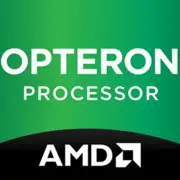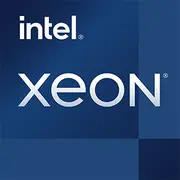AMD Opteron 43GK HE vs Intel Xeon E5-2643 v4
CPU比較結果
以下は、主要なパフォーマンス特性、消費電力などに基づいた
AMD Opteron 43GK HE
と
Intel Xeon E5-2643 v4
CPU の比較です。
利点
- もっと コア合計数: 8 (8 vs 6)
- より高い 製造プロセス: 14 nm (32 nm vs 14 nm)
- より高い メモリタイプ: DDR4 1600/1866/2133/2400 (DDR3 vs DDR4 1600/1866/2133/2400)
- もっと新しい 発売日: January 2016 (December 2012 vs January 2016)
基本
AMD
レーベル名
Intel
December 2012
発売日
January 2016
Server
プラットホーム
Server
Opteron 43GK HE
モデル名
?
Intel プロセッサーの番号は、コンピューティングのニーズに適したプロセッサーを選択する際に、プロセッサーのブランド、システム構成、システムレベルのベンチマークとともに考慮すべきいくつかの要素の 1 つにすぎません。
E5-2643V4
Seoul
コード名
Broadwell
Opteron (Seoul)
世代
-
CPUの仕様
8
コア合計数
?
コアとは、単一のコンピューティング コンポーネント (ダイまたはチップ) 内の独立した中央処理装置の数を表すハードウェア用語です。
6
8
スレッド合計数
?
該当する場合、インテル® ハイパー・スレッディング・テクノロジーはパフォーマンス・コアでのみ利用可能です。
12
-
基本周波数
3.40 GHz
-
最大ターボ周波数
?
最大ターボ周波数は、インテル® ターボ・ブースト・テクノロジー、およびインテル® ターボ・ブースト・マックス・テクノロジー 3.0 (存在する場合) およびインテル® サーマル・ベロシティ・ブーストを使用してプロセッサーが動作できる最大シングルコア周波数です。 周波数は通常、ギガヘルツ (GHz)、つまり 1 秒あたり 10 億サイクルで測定されます。
3.70 GHz
2.6 GHz
基本周波数 (P)
-
3.6 GHz
ターボブースト周波数 (P)
?
インテル® ターボ・ブースト・テクノロジーから得られる最大 P コア・ターボ周波数。
-
-
Intel Hyper-Threading Technology
?
Intel® Hyper-Threading Technology (Intel® HT Technology) delivers two processing threads per physical core. Highly threaded applications can get more work done in parallel, completing tasks sooner.
Yes
-
Intel Turbo Boost Technology 2.0 Frequency
3.70 GHz
-
Intel Turbo Boost Technology
?
Intel® Turbo Boost Technology dynamically increases the processor's frequency as needed by taking advantage of thermal and power headroom to give you a burst of speed when you need it, and increased energy efficiency when you don’t.
2.0
384K
L1キャッシュ
-
8MB
L2キャッシュ
-
8MB shared
L3キャッシュ
-
AMD Socket C32
ソケット
?
ソケットは、プロセッサとマザーボード間の機械的および電気的接続を提供するコンポーネントです。
FCLGA2011
200MHz
バス周波数
-
13.0
乗数
-
No
乗数解除
-
32 nm
製造プロセス
?
リソグラフィーとは、集積回路の製造に使用される半導体技術を指し、半導体上に構築されるフィーチャーのサイズを示すナノメートル (nm) で報告されます。
14 nm
65 W
消費電力
135 W
-
PCI Express バージョン
?
PCI Express リビジョンは、PCI Express 標準のサポートされているバージョンです。 Peripheral Component Interconnect Express (PCIe) は、ハードウェア デバイスをコンピュータに接続するための高速シリアル コンピュータ拡張バス規格です。 PCI Express のバージョンが異なれば、サポートされるデータ レートも異なります。
3.0
-
PCI Expressレーン数
?
PCI Express (PCIe) レーンは、2 つの差動信号ペア (1 つはデータ受信用、もう 1 つはデータ送信用) で構成され、PCIe バスの基本単位です。PCI Express レーンの最大数は、サポートされるレーンの合計数です。
40
-
指図書
?
命令セットは、CPU 内部に保存されているハード プログラムであり、CPU の動作をガイドおよび最適化します。 これらの命令セットを使用すると、CPU をより効率的に実行できます。 CPU を設計するメーカーは数多くあり、その結果、Intel 陣営の 8086 命令セットや ARM 陣営の RISC 命令セットなど、さまざまな命令セットが作成されます。 x86、ARM v8、および MIPS はすべて命令セットのコードです。 命令セットは拡張できます。 たとえば、x86 は、x86-64 を作成するために 64 ビットのサポートを追加しました。 特定の命令セットと互換性のある CPU を開発するメーカーは、命令セットの特許所有者からの許可を必要とします。 典型的な例は、Intel が AMD を認可し、AMD が x86 命令セットと互換性のある CPU を開発できるようにすることです。
64-bit
-
Intel 64
?
Intel® 64 architecture delivers 64-bit computing on server, workstation, desktop and mobile platforms when combined with supporting software.¹ Intel 64 architecture improves performance by allowing systems to address more than 4 GB of both virtual and physical memory.
Yes
-
PCI Express Configurations
?
PCI Express (PCIe) Configurations describe the available PCIe lane configurations that can be used to link to PCIe devices.
x4 | x8 | x16
1.2 billions
トランジスタ数
-
メモリ仕様
DDR3
メモリタイプ
?
インテル® プロセッサーには、シングル チャネル、デュアル チャネル、トリプル チャネル、フレックス モードの 4 つのタイプがあります。 複数のメモリ チャネルをサポートする製品でチャネルごとに複数の DIMM を装着すると、サポートされる最大メモリ速度が低下する可能性があります。
DDR4 1600/1866/2133/2400
-
最大メモリサイズ
?
最大メモリ サイズとは、プロセッサがサポートする最大メモリ容量を指します。
1.5 TB
-
最大メモリチャネル数
?
メモリ チャネルの数は、実際のアプリケーションの帯域幅動作を指します。
4
-
バス速度
9.6 GT/s
-
最大メモリ帯域幅
?
Max Memory bandwidth is the maximum rate at which data can be read from or stored into a semiconductor memory by the processor (in GB/s).
76.8 GB/s
-
ECC Memory Supported
?
ECC Memory Supported indicates processor support for Error-Correcting Code memory. ECC memory is a type of system memory that can detect and correct common kinds of internal data corruption. Note that ECC memory support requires both processor and chipset support.
Yes
No
ECCメモリサポート
-
GPUの仕様
N/A
統合グラフィックス
?
統合型 GPU は、CPU プロセッサに統合されたグラフィックス コアを指します。 プロセッサーの強力な計算能力とインテリジェントな電力効率管理を活用して、優れたグラフィックス パフォーマンスとスムーズなアプリケーション エクスペリエンスを低消費電力で実現します。
-
その他
-
Intel Virtualization Technology (VT-x)
?
Intel® Virtualization Technology (VT-x) allows one hardware platform to function as multiple “virtual” platforms. It offers improved manageability by limiting downtime and maintaining productivity by isolating computing activities into separate partitions.
Yes
-
Intel Virtualization Technology for Directed I/O (VT-d)
?
Intel® Virtualization Technology for Directed I/O (VT-d) continues from the existing support for IA-32 (VT-x) and Itanium® processor (VT-i) virtualization adding new support for I/O-device virtualization. Intel VT-d can help end users improve security and reliability of the systems and also improve performance of I/O devices in virtualized environments.
Yes
-
Intel Standard Manageability (ISM)
?
Intel® Standard Manageability is the manageability solution for Intel vPro® Essentials platforms and is a subset of Intel® AMT with out-of-band management over Ethernet and Wi-Fi, but no KVM or new life cycle management features.
Intel® AVX2
-
Enhanced Intel SpeedStep Technology
?
Enhanced Intel SpeedStep® Technology is an advanced means of enabling high performance while meeting the power-conservation needs of mobile systems. Conventional Intel SpeedStep® Technology switches both voltage and frequency in tandem between high and low levels in response to processor load. Enhanced Intel SpeedStep® Technology builds upon that architecture using design strategies such as Separation between Voltage and Frequency Changes, and Clock Partitioning and Recovery.
Yes
-
Execute Disable Bit
?
Execute Disable Bit is a hardware-based security feature that can reduce exposure to viruses and malicious-code attacks and prevent harmful software from executing and propagating on the server or network.
Yes
-
Cache
?
CPU Cache is an area of fast memory located on the processor. Intel® Smart Cache refers to the architecture that allows all cores to dynamically share access to the last level cache.
20 MB Intel® Smart Cache
-
Intel AES New Instructions
?
Intel® AES New Instructions (Intel® AES-NI) are a set of instructions that enable fast and secure data encryption and decryption. AES-NI are valuable for a wide range of cryptographic applications, for example: applications that perform bulk encryption/decryption, authentication, random number generation, and authenticated encryption.
Yes
-
Intel VT-x with Extended Page Tables (EPT)
?
Intel® VT-x with Extended Page Tables (EPT), also known as Second Level Address Translation (SLAT), provides acceleration for memory intensive virtualized applications. Extended Page Tables in Intel® Virtualization Technology platforms reduces the memory and power overhead costs and increases battery life through hardware optimization of page table management.
Yes
-
Intel Flex Memory Access
No
-
Intel OS Guard
Yes


